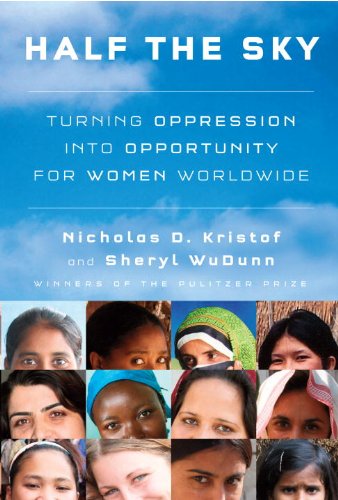Serendip is an independent site partnering with faculty at multiple colleges and universities around the world. Happy exploring!
Half the Sky

In reviewing the course notes for this past week, I was struck by the first image of the Haitian pregnant women lined up. A few years ago I read a book called Half the Sky. Half the Sky is a book written by a couple that were journalists for the New York Times (I think. I'm really pretty sure, but regardless, that doesn't affect this post). This couple travelled to many poorer countries, such as Thailand, Haiti, and Africa. They would talk to hundreds on women in these countries. They heard horrible stories of torture, second-class citizenship, and stories of triumph and success. The book is tremendously well written and very readable. So how does this relate to the picture? With basic sex education and some women’s rights laws put in place, these statistics and images wouldn’t exist. Of course that is not so easily accomplished. But I do think that all of you should read this book. I could not put it down. I am not naïve enough to think that we can fix all of these problems in the near future, but I do think that educating ourselves about issues that don’t get as much press in the newspaper can only help. To truly be a citizen of the world, you need to know what is happening in all corners of the world.




Comments
Last year during winter break
Last year during winter break I read this book and thought it was excellent! It is similar to pathologies of power in the way that it makes the reader want to make the same sort of impact the author did. I love reading Paul Farmer but as someone mentioned in class last week, he writes in such a way that makes the reader feel like it is difficult to actually help someone without being a doctor. This book gives many examples of how women stood up against structural violence within and outside their communities and were able to make significant changes. The book tells stories of women all over the world who are either victims of structural violence, stand up to structural violence, or both. I like how it contrasts pathogies of power by showing that people with no education or money have the ability to make just as much of an impact as individuals coming from the west with degrees and large sums of money.